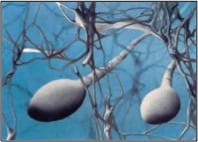
Sexual Assault Evidence
For a variety of reasons, some victims of sexual assault provide vaginal samples more than 24-36 hours after the incident. The ability to obtain an autosomal STR profile of the semen donor from the living victim diminishes rapidly as the post coital interval is extended. We have developed various enhancement strategies to extend the post coital interval (up to 9 days) from which a genetic profile of the semen donor can be obtained. We attribute our success to a number of factors that significantly improve the sensitivity and specificity of the analysis, including the development of a Y chromosome targeted pre-amplification strategy. The results of this work are likely to have a significant impact on the investigation of rape cases and the time frame in which sexual assault evidence is collected.
U.S. Y-STR Database
The significance of a Y-STR match in casework is estimated by reference to a reliable and relevant database of Y-STR profiles. NCFS currently maintains the U.S. Y-STR Database (funded by the National Institute of Justice, NIJ), a population database intended for use in estimating Y-STR haplotype population frequencies for forensic casework purposes. Currently, an 11 to 23-locus profile can be searched, which will soon be expanded to 27 loci to include all loci used in commercially available Y-STR kits. As of the last update (August 2013), the database contained 29, 754 haplotypes. The database is continually expanded with haplotype data contributions from operational, academic and commercial laboratories throughout the U.S.

Body Fluid Identification
DNA typing to identify the donor of transferred biological traces deposited at the crime scene or on a person or implement is now a routine practice worldwide. This represents potentially critical ‘source level’ information for investigations. However, a DNA profile from the perpetrator doesn’t reveal the circumstances by which it got transferred. This contextual information or ‘activity level’ is important because the deposition of the perpetrator’s biological material requires some behavioral activity on behalf of the individual that results in its transfer from the body. The consequences of different modes of transfer of the DNA profile may dramatically affect the investigation and prosecution of the crime. Conventional methods of body fluid identification use labor-intensive, technologically diverse techniques that are costly in terms of time and sample. For some frequently encountered body fluids (e.g. saliva, vaginal secretions, menstrual blood and skin) no definitive identification technique exists. Therefore, there is a critical need for the development of novel strategies for the identification of forensically relevant biological fluids. A pattern of gene expression is produced in body fluid secretions and tissues that uniquely defines each cell type present. This is evidenced by the presence and relative abundance of specific RNA species. We have developed a number of highly specific RNA profiling assays, using both messenger RNA (mRNA) and microRNA (miRNA) biomarkers, for body fluid and tissue identification that employ a variety of commonly used analytical platforms.
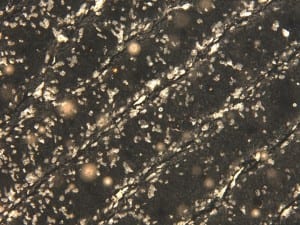
Trace Biological Evidence
In forensic casework analysis, it is sometimes necessary to obtain genetic profiles from increasingly less amounts of biological material left behind by persons involved in criminal offenses. Forensic casework evidentiary items sometimes contain less than 100 pg of template DNA, which is equivalent to approximately 15 diploid or 30 haploid cells. The presence of such low template DNA (LTDNA) samples could be due to several factors including damaged or degraded DNA, oligospermic or aspermic individuals, extended interval post coital samples, or other trace biological evidence such as ‘touch DNA’. Since only a small amount of genetic material is present in these samples, recovery of genetic profiles is challenging using standard DNA analysis methods. Therefore, novel strategies for the improved analysis of trace biological evidence need to be developed. We are investigating the use of different strategies (e.g. laser capture micro-dissection, micro-manipulation, micro-volume PCR) to improve profile recovery from trace biological evidence.
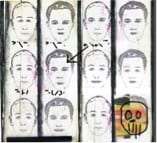
External Visible Traits
The donor of a body fluid recovered from the crime scene is identified by comparing the crime scene DNA profile to profiles obtained from reference samples obtained from known individuals. However, in the absence of appropriate comparison reference samples, the DNA profile per se presently provides no meaningful information to investigators, with the notable exception of gender determination. A number of other physically recognizable characteristics of an individual may be amenable to molecular genetic analysis and these include skin-, hair- and eye- color, stature (height and weight), age and facial morphology. Our focus is on the development of novel strategies for the determination of ethno-geographic ancestry and the biological age of an individual.
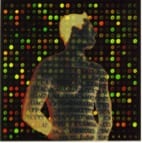
Enhanced DNA Analysis
A goal of our research efforts is to aid in the development of novel DNA technologies to make DNA analysis quicker, better or cheaper. Our main focus areas include mixture de-convolution and the development and validation of “rapid” DNA screening and analysis techniques and instrumentation (R-DNA).
Mixtures are frequently encountered in forensic DNA analysis due to the involvement of multiple persons during the commission of certain crimes. Mixtures are also often found associated with ‘touch DNA’ or with other crime scene samples due to unavoidable contamination with previously deposited DNA. Analysis and interpretation of these admixed DNA samples is often quite complex and therefore extremely challenging even more so if the number of donors exceeds two. A limited number of tools are available to operational forensic laboratories in order to aid in the interpretation or handling of mixtures. Our work has focused on the development of novel strategies for the de-convolution of body fluid mixtures containing non-distinguishable cell types (e.g. epithelial cells and leukocytes) including the use of binomial sampling strategies combined with quantitative computer- based interpretation systems.
The next revolution in forensic DNA analysis, apart from the application of next generation sequencing technology, is the deployment of R-DNA systems. The concept behind this is that actionable forensic intelligence can be obtained in situ (at the crime scene, booking station etc) by instrumentation that permits ‘sample-in results out’ analysis within an hour or so. We are assisting in the testing and evaluation of some of these systems, in particular the RapidHIT 200 (IntegenX) and paraDNA (LGC) platforms. The RapidHIT system is capable of providing a full CODIS autosomal STR profile whereas the paraDNA system is principally designed as a cost-effective screen or intelligence system.
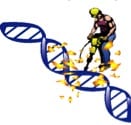
Fundamental Biochemical Processes
One of the limiting factors with DNA typing technology is that sometimes DNA isolated from physiological stains recovered from the crime scene is so damaged as to be intractable to analysis. However, current knowledge of the biochemical nature and extent of the DNA damage in biological stains of forensic importance is rudimentary. We have investigated the basic chemistry of the dried state, specifically that of the most common expected type of chemical reactions, namely hydrolysis and oxidation to determine the rates of such reactions under different environmental conditions. We have also characterized the molecular lesions that prevent the ability to obtain a standard DNA profile in damaged DNA recovered from crime scene physiological stains with a view to determining possible DNA repair strategies. Subtle physicochemical changes to the structure of the hemoglobin molecule in the dried state in bloodstains have been used by us to develop a simple VIS spectroscopic method for the estimation of the age of the bloodstain (i.e. time since deposition (TSD)).

